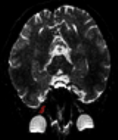Abstract
Research Article
The lateralization pattern has an influence on the severity of ankle sprains
Andrzej Mioduszewski*, Mikołaj Wróbel and Emilia Hammar
Published: 28 April, 2023 | Volume 8 - Issue 2 | Pages: 016-020
Study design: Descriptive study.
Background: Many risk factors contributing to ankle sprains have been studied in medical literature with coordination and balance being two of the major endogenous factors described. These are influenced by lateralization – a developmental and adaptive ability determined by the asymmetrical construction of the human brain, with cross-laterality referring to mixed limb dominance.
Objectives: To determine whether cross lateralization is a risk factor for the severity of ligamentous injuries in ankle sprains since no data is yet available on such correlation.
Methods: Two hundred forty-four patients with acute ankle sprains (136 men and 108 women) were prospectively evaluated between April 2006 and March 2009. The mean age was 30 (ranging from 18 to 76). Clinical and ultrasonographic examinations were performed on the study subjects. Laterality was then assessed by the Coren questionnaire and the AOFAS score was calculated. Patients with syndesmotic injuries and fractures were excluded from the study. Those qualified were divided into straight and crossed groups, according to their laterality type.
Results: One hundred forty-four patients displayed straight lateralization, while cross-laterality was found in 100 subjects. Patients in the crossed group experienced more multi-ligamentous injuries than those in the straight group (p = 0.02). Following trauma, a higher AOFAS score was attributed to subjects that displayed a straight lateralization pattern, in comparison to subjects presenting with crossed laterality (p = 0.04).
Conclusion: Crossed lateralization is associated with higher severity of ligament injuries in ankle sprains and may be considered a risk factor for calcaneofibular ligament injuries.
Read Full Article HTML DOI: 10.29328/journal.jsmt.1001066 Cite this Article Read Full Article PDF
Keywords:
Ankle sprain; Lateralization; Sports Trauma; Prevention
References
- Fong DT, Hong Y, Chan LK, Yung PS, Chan KM. A systematic review on ankle injury and ankle sprain in sports. Sports Med. 2007;37(1):73-94. doi: 10.2165/00007256-200737010-00006. PMID: 17190537.
- Doherty C, Delahunt E, Caulfield B, Hertel J, Ryan J, Bleakley C. The incidence and prevalence of ankle sprain injury: a systematic review and meta-analysis of prospective epidemiological studies. Sports Med. 2014 Jan;44(1):123-40. doi: 10.1007/s40279-013-0102-5. PMID: 24105612.
- Beynnon BD, Murphy DF, Alosa DM. Predictive Factors for Lateral Ankle Sprains: A Literature Review. J Athl Train. 2002 Dec;37(4):376-380. PMID: 12937558; PMCID: PMC164368.
- Beynnon BD, Renstrom PA, Alosa DM, et al. Ankle ligament injury risk factors: a prospective study of college athletes. J Orthop Res. 2001 19(2), 213-220.
- Ekstrand J, Gillquist J. Soccer injuries and their mechanisms: a prospective study. Med Sci Sports Exerc. 1983;15(3):267-70. doi: 10.1249/00005768-198315030-00014. PMID: 6621313.
- Hosea TM, Carey CC, Harrer MF. The gender issue: epidemiology of ankle injuries in athletes who participate in basketball. Am J Sports Med. 1982; 10:297-299.
- de Noronha M, Lay EK, Mcphee MR, Mnatzaganian G, Nunes GS. Ankle Sprain Has Higher Occurrence During the Latter Parts of Matches: Systematic Review With Meta-Analysis. J Sport Rehabil. 2019 May 1;28(4):373-380. doi: 10.1123/jsr.2017-0279. Epub 2019 Feb 4. PMID: 29809104.
- Pasanen K, Ekola T, Vasankari T, Kannus P, Heinonen A, Kujala UM, Parkkari J. High ankle injury rate in adolescent basketball: A 3-year prospective follow-up study. Scand J Med Sci Sports. 2017 Jun;27(6):643-649. doi: 10.1111/sms.12818. Epub 2016 Dec 29. PMID: 28033652.
- Kobayashi T, Tanaka M, Shida M. Intrinsic Risk Factors of Lateral Ankle Sprain: A Systematic Review and Meta-analysis. Sports Health. 2016 Mar-Apr;8(2):190-3. doi: 10.1177/1941738115623775. PMID: 26711693; PMCID: PMC4789932.
- de Vasconcelos GS, Cini A, Sbruzzi G, Lima CS. Effects of proprioceptive training on the incidence of ankle sprain in athletes: systematic review and meta-analysis. Clin Rehabil. 2018 Dec;32(12):1581-1590. doi: 10.1177/0269215518788683. Epub 2018 Jul 12. PMID: 29996668.
- Coren S. The left-hander syndrome. New York: 1-st Vintage books. 1993
- Zazzo R. Methods of psychological examination of a child. Warsaw: PZWL.
- Oldfield RC. The assessment and analysis of handedness: the Edinburgh inventory. Neuropsychologia. 1971 Mar;9(1):97-113. doi: 10.1016/0028-3932(71)90067-4. PMID: 5146491.
- Kitaoka HB, Alexander IJ, Adelaar RS. Clinical rating systems for the ankle-hindfood, mid-foot, hallux and lesser 310 toes. Foot Ankle Int. 1994; 15:135-149.
- Sobczyk M. Statistics [in Polish]. Warsaw: PWN. 2002
- Pekkarinen A, Salminen S, Järvelin MR. Hand preference and risk of injury among the Northern Finland birth cohort at the age of 30. Laterality. 2003 Oct;8(4):339-46. doi: 10.1080/13576500244000283. PMID: 15513230.
- DeLang MD, Salamh PA, Farooq A, Tabben M, Whiteley R, van Dyk N, Chamari K. The dominant leg is more likely to get injured in soccer players: systematic review and meta-analysis. Biol Sport. 2021 Sep;38(3):397-435. doi: 10.5114/biolsport.2021.100265. Epub 2020 Oct 28. PMID: 34475623; PMCID: PMC8329968.
- Niu W, Wang Y, He Y, Fan Y, Zhao Q. Kinematics, kinetics, and electromyogram of ankle during drop landing: a comparison between dominant and non-dominant limb. Hum Mov Sci. 2011 Jun;30(3):614-23. doi: 10.1016/j.humov.2010.10.010. Epub 2011 Mar 24. PMID: 21439665.
- Kobayashi T, Tanaka M, Shida M. Intrinsic Risk Factors of Lateral Ankle Sprain: A Systematic Review and Meta-analysis. Sports Health. 2016 Mar-Apr;8(2):190-3. doi: 10.1177/1941738115623775. PMID: 26711693; PMCID: PMC4789932.
- Surve I, Schwellnus MP, Noakes T, Lombard C. A fivefold reduction in the incidence of recurrent ankle sprains in soccer players using the Sport-Stirrup orthosis. Am J Sports Med. 1994 Sep-Oct;22(5):601-6. doi: 10.1177/036354659402200506. PMID: 7810782.
- Freckleton G, Pizzari T. Risk factors for hamstring muscle strain injury in sport: a systematic review and meta-analysis. Br J Sports Med. 2013 Apr;47(6):351-8. doi: 10.1136/bjsports-2011-090664. Epub 2012 Jul 4. PMID: 22763118.
- Mason J, Kniewasser C, Hollander K, Zech A. Intrinsic Risk Factors for Ankle Sprain Differ Between Male and Female Athletes: A Systematic Review and Meta-Analysis. Sports Med Open. 2022 Nov 18;8(1):139. doi: 10.1186/s40798-022-00530-y. PMID: 36399159; PMCID: PMC9674823.
- Virgile A, Bishop C. A Narrative Review of Limb Dominance: Task Specificity and the Importance of Fitness Testing. J Strength Cond Res. 2021 Mar 1;35(3):846-858. doi: 10.1519/JSC.0000000000003851. PMID: 33470600.
- Dos'Santos T, Bishop C, Thomas C, Comfort P, Jones PA. The effect of limb dominance on change of direction biomechanics: A systematic review of its importance for injury risk. Phys Ther Sport. 2019 May;37:179-189. doi: 10.1016/j.ptsp.2019.04.005. Epub 2019 Apr 9. PMID: 30986764.
- Kimmerle M. Lateral bias, functional asymmetry, dance training and dance injuries. J Dance Med Sci. 2010;14(2):58-66. PMID: 20507722.
- D'Erme M. Le lesioni dei legamenti collaterali del collo del piede: diagnosi e follow-up con risonanza magnetica ed ecografia [Lesions of the collateral ligaments of the ankle: diagnosis and follow-up with magnetic resonance and ultrasonography]. Radiol Med. 1996 Jun;91(6):705-9. Italian. PMID: 8830353.
- Milz P, Milz S, Steinborn M, Mittlmeier T, Putz R, Reiser M. Lateral ankle ligaments and tibiofibular syndesmosis. 13-MHz high-frequency sonography and MRI compared in 20 patients. Acta Orthop Scand. 1998 Feb;69(1):51-5. doi: 10.3109/17453679809002357. PMID: 9524519.
Similar Articles
-
Retrospective Analysis of Non-Contact ACL Injury Risk: A Case Series Review of Elite Female AthletesLee Herrington*,Ros Cooke. Retrospective Analysis of Non-Contact ACL Injury Risk: A Case Series Review of Elite Female Athletes. . 2017 doi: 10.29328/journal.jsmt.1001002; 2: 001-008
-
Joint Functional Screening for Older Adults: Clinical Prevention of Accidental FallBalwant S Bains*. Joint Functional Screening for Older Adults: Clinical Prevention of Accidental Fall. . 2017 doi: 10.29328/journal.jsmt.1001013; 2: 091-094
-
Perception of Nutrition and Exercise as a Tool in Controlling Cardiovascular Diseases among the Elderly in Anambra StateAlagbu Chukwubuikem Eugene*,Alagbu Chinwe Adline,Chike Ijezie Ifeoma Blessing,Agwubike Elias Okey. Perception of Nutrition and Exercise as a Tool in Controlling Cardiovascular Diseases among the Elderly in Anambra State. . 2017 doi: 10.29328/journal.jsmt.1001017; 2: 123-128
-
Administration of Non-Pharmachologic Intervention in the control of Hypertension among selected volunteer retirees in Awka Metropolis Anambra State NigeriaAlagbu Chukwubuikem Eugene*,Alagbu Chinwe Adline,Chike Ijezie Ifeoma Blessing,Agwubike Elias Okey. Administration of Non-Pharmachologic Intervention in the control of Hypertension among selected volunteer retirees in Awka Metropolis Anambra State Nigeria. . 2017 doi: 10.29328/journal.jsmt.1001018; 2: 129-137
-
The epidemiology, evaluation, and assessment of lateral ankle sprains in athletesG Javier Cavazos Jr.*,Lawrence B Harkless. The epidemiology, evaluation, and assessment of lateral ankle sprains in athletes. . 2021 doi: 10.29328/journal.jsmt.1001052; 6: 008-017
-
Effectiveness of physical rehabilitation on sphygmography and blood pressureGrashchenkova АN*,Puzin SN,Bogova ОТ. Effectiveness of physical rehabilitation on sphygmography and blood pressure. . 2023 doi: 10.29328/journal.jsmt.1001063; 8: 001-003
-
The lateralization pattern has an influence on the severity of ankle sprainsAndrzej Mioduszewski*, Mikołaj Wróbel, Emilia Hammar. The lateralization pattern has an influence on the severity of ankle sprains. . 2023 doi: 10.29328/journal.jsmt.1001066; 8: 016-020
-
Cleat-surface Interface and Lower Extremity InjuriesRyann Davie*, Brittany Ammerman, Natalie Pahapill and Karen Sutton. Cleat-surface Interface and Lower Extremity Injuries. . 2023 doi: 10.29328/journal.jsmt.1001071; 8: 047-050
-
Difference in Injury Risk between Male and Female Alpine Skiers: Review of the LiteratureBrittany Ammerman*, Margot Richards, Ryann Davie, Natalie Pahapill, Karen Sutton. Difference in Injury Risk between Male and Female Alpine Skiers: Review of the Literature. . 2024 doi: 10.29328/journal.jsmt.1001075; 9: 011-014
-
Exploring Dermatofunctional Perspectives beyond Aesthetics: An Integrative Literature ReviewTatiane Franco, Weslley Barbosa Sales*, José Vinicius Bulhões da Silva, Djavan Gomes Leite, Giovanna Pontes Pina Vidal. Exploring Dermatofunctional Perspectives beyond Aesthetics: An Integrative Literature Review. . 2024 doi: 10.29328/journal.jsmt.1001078; 9: 027-031
Recently Viewed
-
Trends in TeledentistryRudrakshi C*. Trends in Teledentistry. J Clin Adv Dent. 2020: doi: 10.29328/journal.jcad.1001014; 4: 004-005
-
Au26-35: A Special Geometrical Structure of Au33 (D2) Cluster with Highly Occupied - 14 Pairs of Double-State DegeneracyK Vishwanathan*. Au26-35: A Special Geometrical Structure of Au33 (D2) Cluster with Highly Occupied - 14 Pairs of Double-State Degeneracy. Ann Adv Chem. 2022: doi: 10.29328/journal.aac.1001035; 6: 063-080
-
Texture of Thin Films of Aluminum Nitride Produced by Magnetron SputteringStrunin Vladimir Ivanovich,Baranova Larisa Vasilievna*,Baisova Bibigul Tulegenovna. Texture of Thin Films of Aluminum Nitride Produced by Magnetron Sputtering. Int J Phys Res Appl. 2025: doi: 10.29328/journal.ijpra.1001106; 8: 013-016
-
Minimising Carbon Footprint in Anaesthesia PracticeNisha Gandhi and Abinav Sarvesh SPS*. Minimising Carbon Footprint in Anaesthesia Practice. Int J Clin Anesth Res. 2024: doi: 10.29328/journal.ijcar.1001025; 8: 005-007
-
On Friedman equation, quadratic laws and the geometry of our universeS Kalimuthu*. On Friedman equation, quadratic laws and the geometry of our universe. Int J Phys Res Appl. 2021: doi: 10.29328/journal.ijpra.1001041; 4: 048-050
Most Viewed
-
Evaluation of Biostimulants Based on Recovered Protein Hydrolysates from Animal By-products as Plant Growth EnhancersH Pérez-Aguilar*, M Lacruz-Asaro, F Arán-Ais. Evaluation of Biostimulants Based on Recovered Protein Hydrolysates from Animal By-products as Plant Growth Enhancers. J Plant Sci Phytopathol. 2023 doi: 10.29328/journal.jpsp.1001104; 7: 042-047
-
Sinonasal Myxoma Extending into the Orbit in a 4-Year Old: A Case PresentationJulian A Purrinos*, Ramzi Younis. Sinonasal Myxoma Extending into the Orbit in a 4-Year Old: A Case Presentation. Arch Case Rep. 2024 doi: 10.29328/journal.acr.1001099; 8: 075-077
-
Feasibility study of magnetic sensing for detecting single-neuron action potentialsDenis Tonini,Kai Wu,Renata Saha,Jian-Ping Wang*. Feasibility study of magnetic sensing for detecting single-neuron action potentials. Ann Biomed Sci Eng. 2022 doi: 10.29328/journal.abse.1001018; 6: 019-029
-
Pediatric Dysgerminoma: Unveiling a Rare Ovarian TumorFaten Limaiem*, Khalil Saffar, Ahmed Halouani. Pediatric Dysgerminoma: Unveiling a Rare Ovarian Tumor. Arch Case Rep. 2024 doi: 10.29328/journal.acr.1001087; 8: 010-013
-
Physical activity can change the physiological and psychological circumstances during COVID-19 pandemic: A narrative reviewKhashayar Maroufi*. Physical activity can change the physiological and psychological circumstances during COVID-19 pandemic: A narrative review. J Sports Med Ther. 2021 doi: 10.29328/journal.jsmt.1001051; 6: 001-007

HSPI: We're glad you're here. Please click "create a new Query" if you are a new visitor to our website and need further information from us.
If you are already a member of our network and need to keep track of any developments regarding a question you have already submitted, click "take me to my Query."

















































































































































